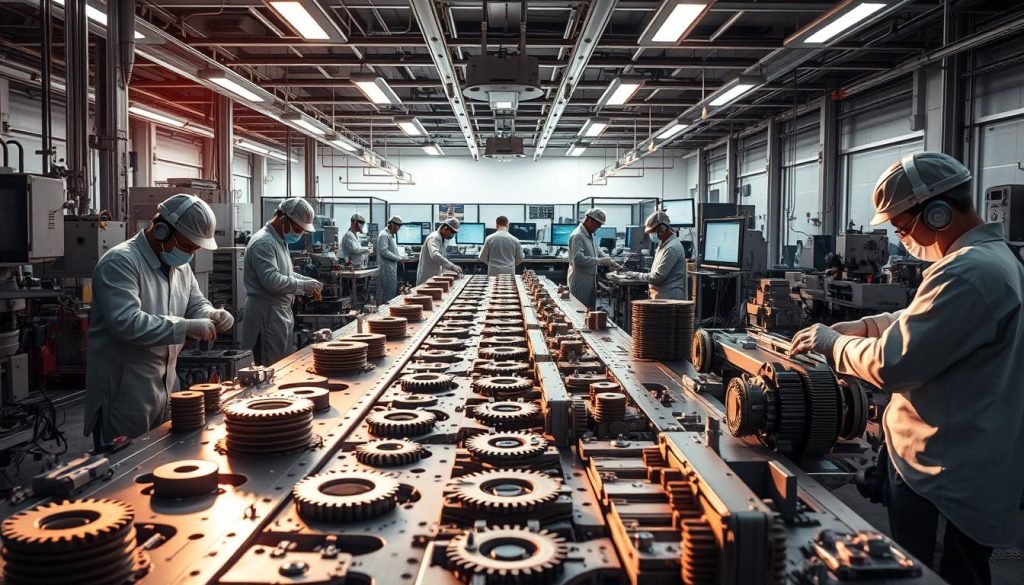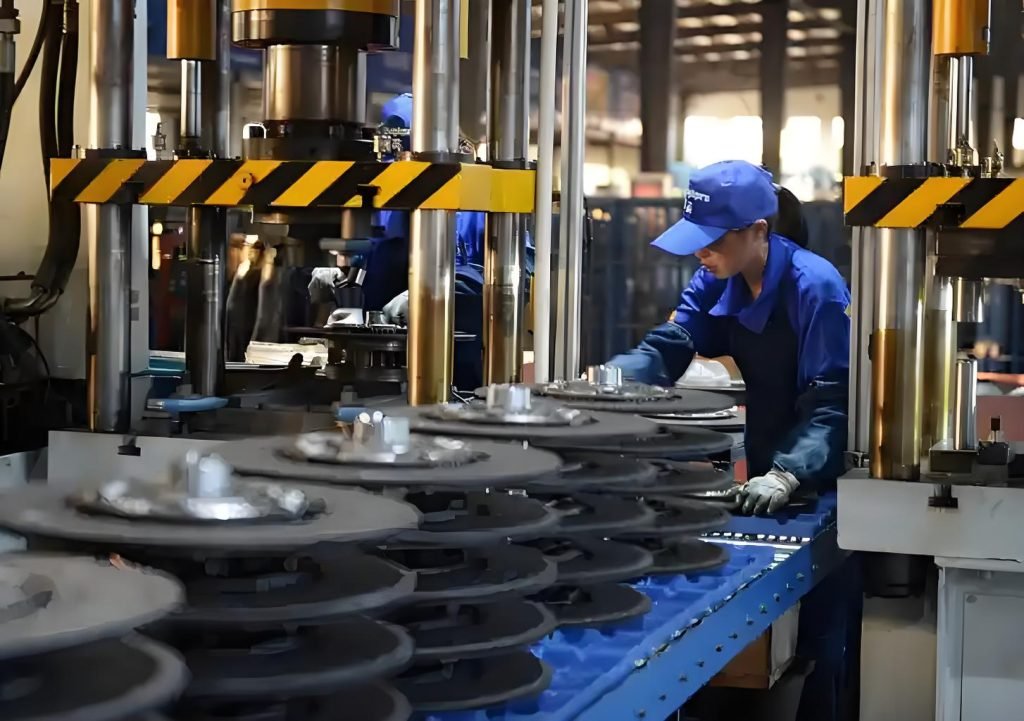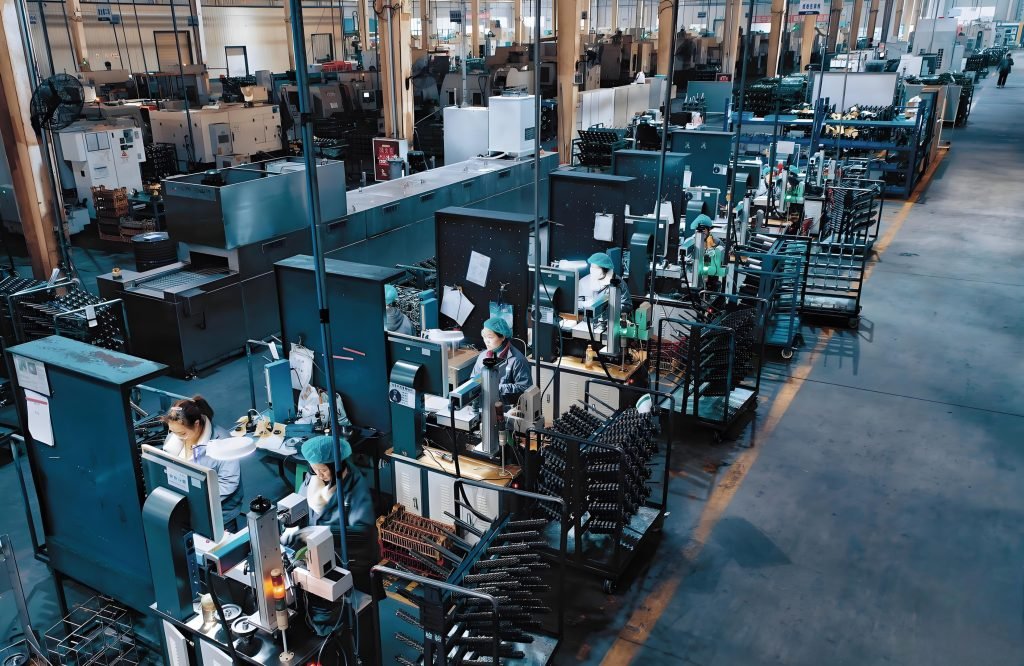Did you know that a significant portion of manufacturing costs are attributed to quality control issues? In fact, ensuring the quality of parts and products is crucial for customer satisfaction and brand reputation. The Production Part Approval Process (PPAP) is a standardized methodology used across industries to validate a supplier’s ability to produce parts that meet customer specifications.
PPAP serves as a critical bridge between product design and full-scale production, verifying that suppliers can consistently manufacture parts according to required specifications. By understanding and implementing PPAP, manufacturers can reduce defects, minimize production delays, and establish reliable quality control systems.

Understanding the Production Part Approval Process (PPAP)
To ensure the production of high-quality parts, manufacturers rely on the Production Part Approval Process (PPAP). This process is crucial in verifying that production parts meet the required quality and safety standards.
Definition and Purpose of PPAP
The Production Part Approval Process (PPAP) is a standardized process used to ensure that production parts meet the required specifications and quality standards. Its primary purpose is to provide confidence that the production process is capable of producing parts that meet customer requirements. PPAP involves a series of documentation and testing procedures to validate the production process and parts.
Origins and Evolution in Manufacturing
PPAP originated in the automotive industry during the late 1980s as a means to standardize supplier quality requirements. The Automotive Industry Action Group (AIAG) formalized PPAP standards, which have since evolved through multiple editions. Initially used in the automotive sector, PPAP has expanded to various manufacturing industries, including aerospace, defense, and electronics. As global supply chains have become more complex, PPAP has adapted to provide consistent quality expectations across international manufacturing operations.
As manufacturing continues to evolve, PPAP remains a critical process in ensuring quality and reliability in production parts. By understanding and implementing PPAP effectively, manufacturers can reduce risks and improve overall quality.
The Critical Role of PPAP in Quality Manufacturing
To stay competitive, manufacturers must adopt PPAP to guarantee quality and reliability in their production processes. PPAP is a systematic approach that ensures parts meet specifications and are produced consistently.
Quality Assurance and Reproducibility Benefits
PPAP enhances quality assurance by validating production processes and ensuring reproducibility. This results in consistent product quality and reduced variability.
Communication and Documentation Advantages
Effective communication and thorough documentation are key benefits of PPAP. It ensures that all stakeholders are aligned and that critical information is readily available.
Risk Reduction and Cost Savings
By identifying potential quality issues early, PPAP significantly reduces manufacturing risks and associated costs. This proactive approach yields substantial cost savings by minimizing scrap, rework, and production delays.
Key Stakeholders in the PPAP Process
Understanding the key stakeholders is crucial for a successful PPAP. The Production Part Approval Process involves two primary stakeholders: suppliers and customers/manufacturers. Their roles and responsibilities are critical to ensuring the quality and reliability of the parts being produced.
Supplier Responsibilities
Suppliers play a vital role in the PPAP process. They are responsible for preparing and submitting the PPAP package, which includes all necessary documentation and samples. Suppliers must ensure that their production process meets the customer’s quality requirements and that all parts are produced to the specified requirements.
Customer/Manufacturer Roles
Customers, typically OEMs or higher-tier suppliers, define part specifications, quality requirements, and PPAP submission expectations. They review the PPAP submission documentation to verify that the supplier has demonstrated the capability to produce parts meeting all requirements. Customers must provide timely feedback on PPAP submissions, including formal approval or rejection with specific improvement requirements.
When PPAP Implementation Is Required
The Production Part Approval Process (PPAP) is required in several key situations to ensure quality and reliability in your manufacturing process. Understanding these scenarios is crucial for effective PPAP implementation.
New Part or Product Development
PPAP is typically required when introducing new parts or products to your production line. This ensures that the new components meet all quality and design specifications from the outset, reducing the risk of future production issues.
Changes to Existing Products or Processes
Any significant changes to existing products or manufacturing processes also necessitate PPAP. This includes alterations to the product design, manufacturing process, or materials used, ensuring that the changes do not adversely affect the product’s quality.
Supplier Changes and Reactivation Scenarios
Changes in suppliers or reactivation of production tools that have been inactive for over a year require PPAP to verify that the new or reactivated process can maintain the required quality standards.
Examples include changing to a new supplier for an existing part, moving production to a different facility, or changes in sub-suppliers that provide critical components. PPAP provides assurance that these changes won’t disrupt the quality or availability of critical components in your supply chain.
The 18 Essential Elements of PPAP Documentation
The Production Part Approval Process (PPAP) documentation is a critical component of quality manufacturing, ensuring that all necessary information is captured and verified. This comprehensive documentation package is required to validate that manufactured parts meet customer specifications and regulatory requirements.
Design and Engineering Documentation
Design and engineering documentation form a crucial part of PPAP. This includes detailed records of the product design, such as CAD models, drawings, and specifications. These documents serve as the foundation for ensuring that the manufactured parts conform to the intended design.
Process Analysis and Control Documents
Process analysis and control documents outline the manufacturing process and the controls in place to ensure consistency and quality. This includes information on process flowcharts, control plans, and work instructions. By documenting these processes, manufacturers can identify areas for improvement and ensure that production is carried out according to plan.
Testing and Verification Requirements
Testing and verification are critical to validating that parts meet the required specifications. This involves conducting various tests, such as dimensional inspections, material tests, and performance tests. The results of these tests are documented in the PPAP package, providing evidence that the parts conform to customer requirements.
To ensure that parts meet customer requirements, manufacturers must conduct thorough inspections and tests. Dimensional results document comprehensive measurements of all part dimensions compared against specification requirements. Material and performance test results verify that the part material meets all chemical, physical, and functional requirements. By compiling these results and maintaining detailed records, manufacturers can demonstrate their commitment to quality and customer satisfaction.

Understanding the 5 PPAP Submission Levels
Understanding the different PPAP submission levels is crucial for suppliers to meet customer requirements effectively. The Production Part Approval Process (PPAP) involves five distinct submission levels, each tailored to specific customer needs and part complexities.
Level 1: Part Submission Warrant Only
Level 1 requires the submission of only the Part Submission Warrant (PSW), which certifies that the part meets all customer requirements. This level is typically used for simple parts or when the customer doesn’t require extensive documentation.
Level 2: PSW with Limited Supporting Data
At Level 2, the supplier submits the PSW along with limited supporting data, such as product samples and some test results. This level provides a moderate level of detail.
Level 3: PSW with Complete Supporting Data
Level 3 involves submitting the PSW with comprehensive supporting data, including detailed test results and process documentation. This level is commonly used for critical parts.
Level 4: Customer-Defined Requirements
Level 4 is tailored to customer-specific requirements, which may include additional documentation or testing beyond what’s required in Level 3.
Level 5: Complete Package at Supplier Location
Level 5 requires the supplier to maintain the complete PPAP package at their manufacturing location, with only the PSW submitted to the customer. This level is used when parts are too large to ship or when documentation is too voluminous.
Step-by-Step Guide to Performing PPAP
To ensure a smooth Production Part Approval Process (PPAP), it’s crucial to understand the step-by-step guide that manufacturers and suppliers must follow. This process is divided into three primary phases: planning, production, and submission.
Planning Phase: Preparation and Requirements Gathering
In the planning phase, you must gather all necessary documentation and understand the customer’s requirements. As a supplier, it’s your responsibility to ensure that you have all the required information and resources to meet these requirements. This includes design and engineering documentation, process analysis, and control documents.
Production Phase: Sample Creation and Testing
During the production phase, you will create samples according to the agreed-upon specifications. These samples will undergo testing and verification to ensure they meet the customer’s requirements. It’s essential to maintain detailed records of the production process and any testing performed.
Submission Phase: Documentation and Approval
In the submission phase, you will compile all required documentation, complete the Part Submission Warrant (PSW), and submit the package to the customer according to the specified submission level. The PSW serves as your formal declaration that all aspects of the part and production process meet customer requirements. After submission, be prepared to respond to any customer questions or requests for additional information. The customer will then review your submission and respond with one of three outcomes: approved, conditionally approved, or rejected.
Digitizing PPAP: Modern Approaches and Tools
Digital technologies are increasingly being adopted to streamline PPAP, enhancing quality and reducing errors. This shift towards digitization is transforming the way manufacturers approach quality validation and documentation.
Model-Based Definition (MBD) for PPAP
Model-Based Definition (MBD) is revolutionizing PPAP by providing a digital representation of product specifications. By automating the generation of Bill of Characteristics and linking it directly to CAD models, MBD significantly reduces errors in the inspection process and measurement data. For instance, GEA reduced PPAP report generation errors by 77% by automating PPAP with MBDVidia.
Automated PPAP Report Generation
Automated PPAP report generation is another key aspect of modernizing the PPAP process. Specialized software tools can extract dimensional requirements from CAD models, generate inspection plans, and populate PPAP documentation with measurement results. This automation improves the quality of the data and results, ensuring consistency and traceability throughout the quality validation process.
Common Challenges and Solutions in PPAP Implementation
As you embark on PPAP implementation, you’ll likely encounter several hurdles that require careful consideration. Effective PPAP implementation is crucial for ensuring that your production parts meet customer requirements and maintain high quality standards.

Documentation and Compliance Issues
One of the primary challenges in PPAP implementation is managing documentation and ensuring compliance with customer requirements. This can be addressed by implementing robust document control processes and conducting regular audits.
Communication Breakdowns
Communication breakdowns between suppliers, manufacturers, and customers can lead to misunderstandings and delays. To mitigate this, establish clear communication channels and protocols for information sharing.
Process Consistency Problems
Maintaining consistent manufacturing processes is vital to avoid quality issues after PPAP approval. Solutions include implementing robust change management processes and conducting periodic production audits to verify ongoing compliance with approved PPAP parameters.
By understanding these common challenges and implementing effective solutions, you can ensure a smooth PPAP implementation process that enhances your production quality and meets customer requirements.
Conclusion: Maximizing the Value of PPAP in Your Manufacturing Process
PPAP is more than just a customer mandate; it’s a comprehensive tool for achieving manufacturing excellence. To maximize its value, you should integrate PPAP principles into your broader quality management systems.
This integration creates synergies that improve overall product quality and manufacturing efficiency. By leveraging PPAP data for continuous improvement initiatives, you can achieve ongoing returns on your investment.
Developing internal PPAP expertise and modernizing your PPAP processes with digital tools will give you a competitive edge, enabling faster approvals and more efficient quality validation. Ultimately, PPAP’s greatest value lies in the confidence it creates in your manufacturing process and product quality.




